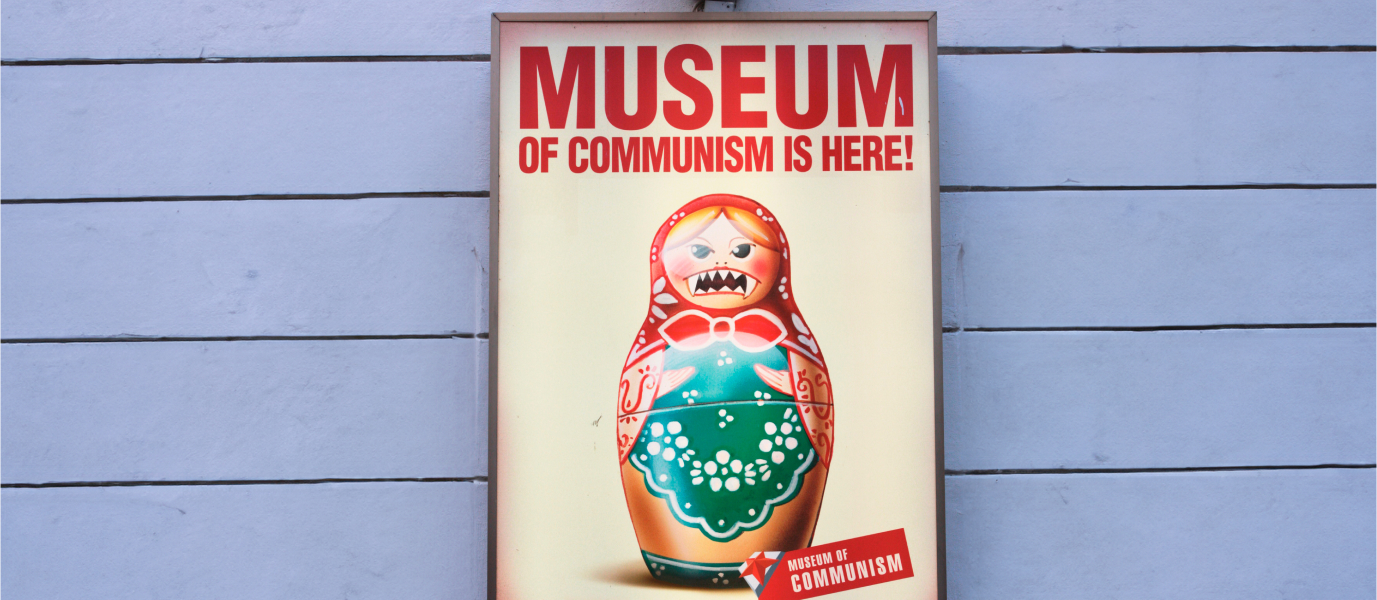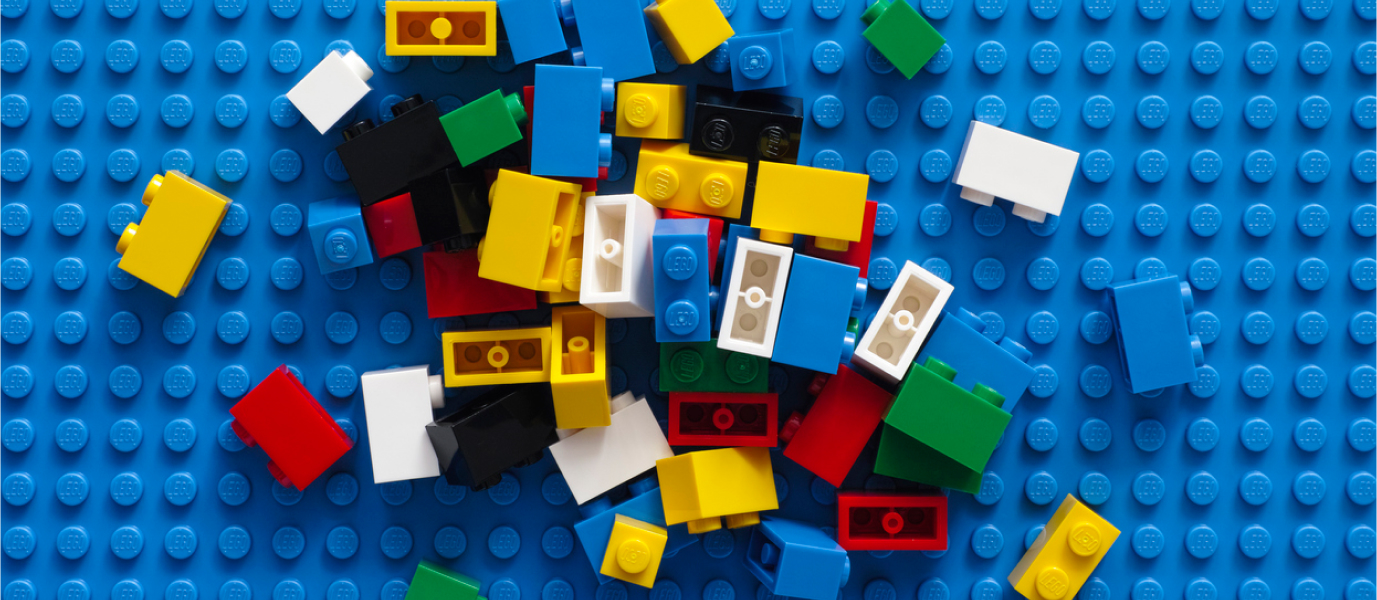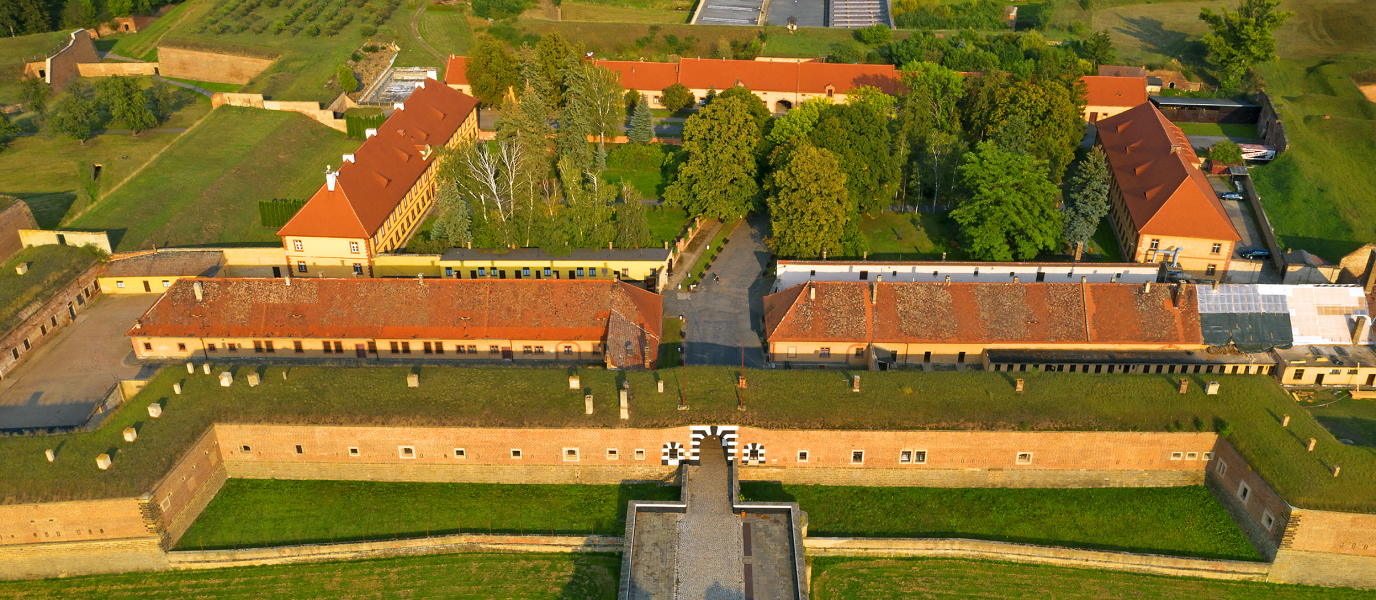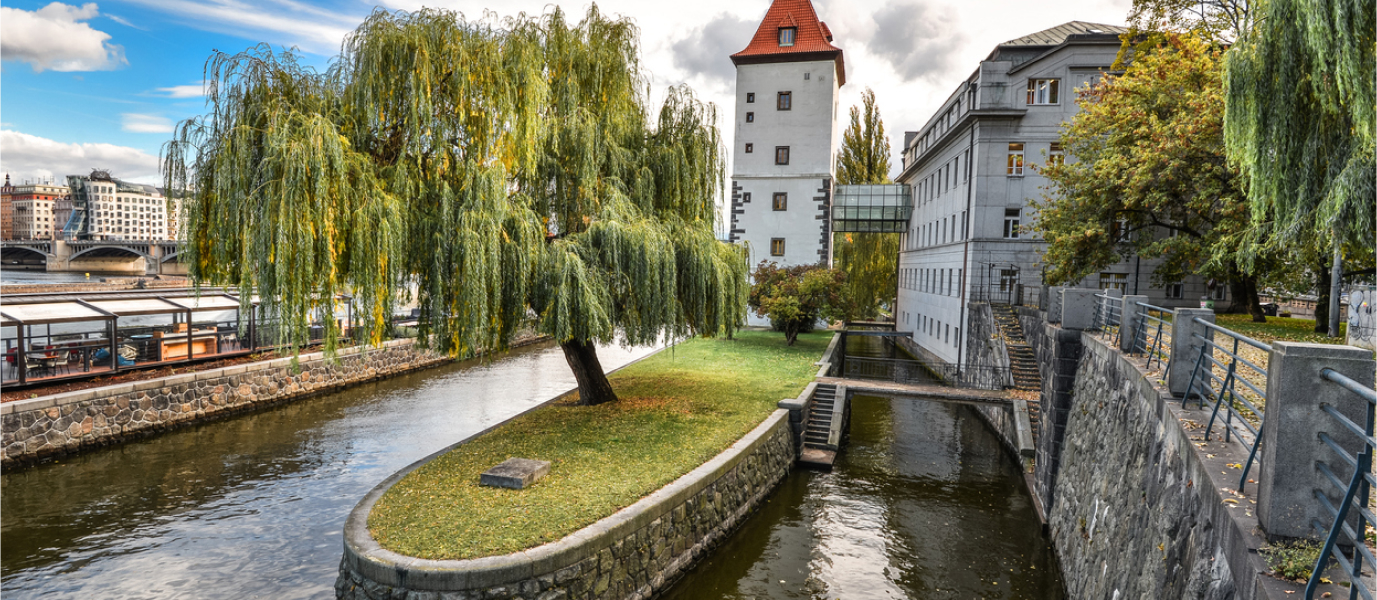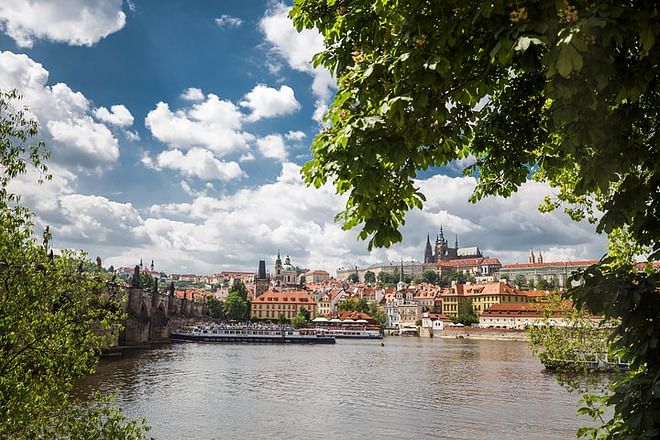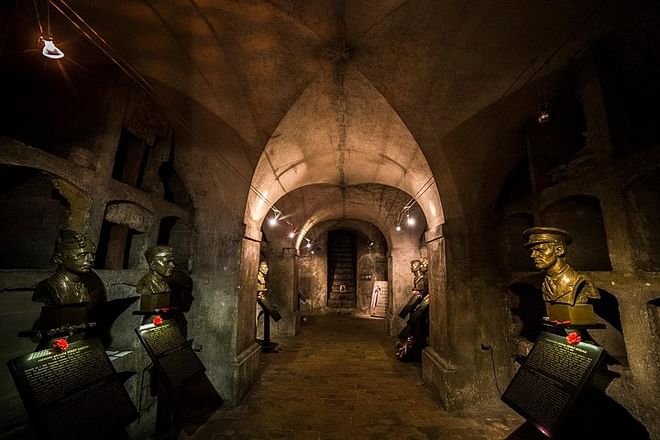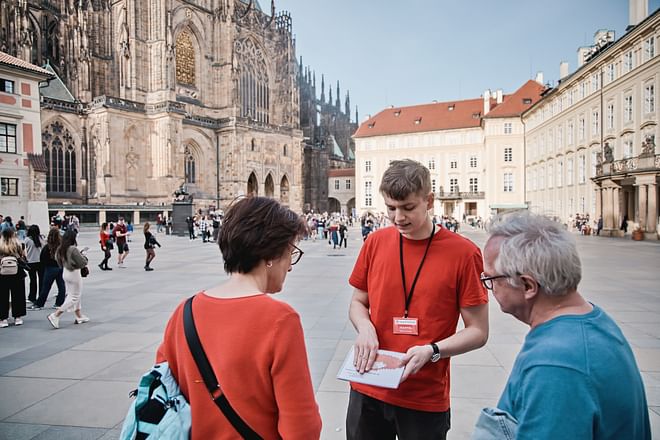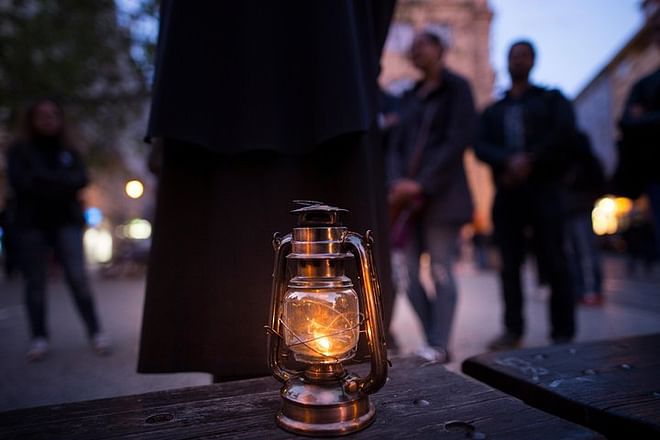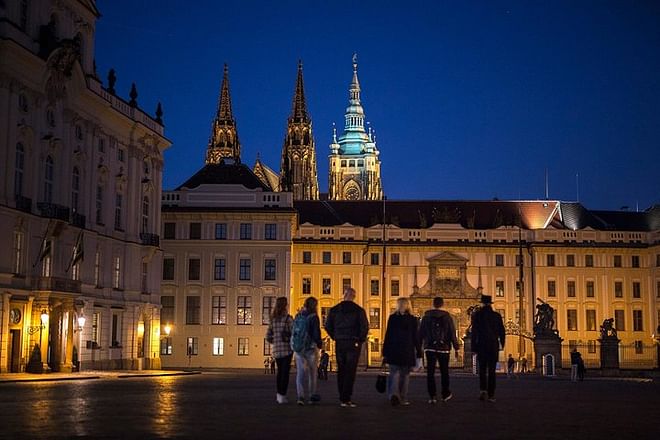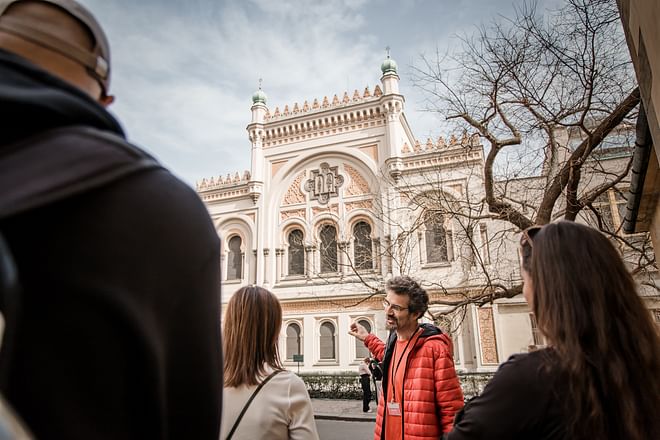The city of Prague is a living witness of European history. During the twentieth century, it experienced first hand the events that devastated the world. Czechoslovakia was formed at the end of the First World War as a successor state to the Austro-Hungarian Empire. It was made up of what is today the Czech Republic, Slovakia and Carpathian Ruthenia. Despite the ethnic issues posed by minorities, this democratic republic prospered during the interwar period. Prague served as the central government’s headquarters and the capital of the Czech state.
When Hitler occupied Prague during the Second World War, the Nazis began their persecution of Jews in this city by deporting most to concentration camps and exterminating them. The Soviet army freed Prague in 1945, and a short time later Czechoslovakia was placed under the protection of the Soviet Union upon joining the Eastern Bloc. For history lovers, the Museum of Communism offers a different way to learn about the details of this period that has forever defined the entire nation.
What the Museum of Communism covers
It is always best to learn about the background in order to understand what a museum aims to convey. To make the most of visiting Prague’s Museum of Communism, it is helpful to first have a grasp of some of the key facts and important events from this era.
After the Second World War, Czechoslovakia was once again a free country. However, the start of the Cold War resulted in a growing number of people who supported communist ideology. Constant pressure on President Edvard Beneš led to what is known as Victorious February: on 25 February 1948, following a coup d’état, Beneš handed power over to Klement Gottwald, enabling the Communist Party to make its way into the Czechoslovakian government. This marked the start of an era defined by tremendous Soviet repression.
Private property ceased to exist and the country began to be ruled by the fear that citizens felt at expressing ideas against this new government. Nearly three million people of German descent were expelled from Czechoslovakia and atheism was encouraged. With Stalin’s death in 1953, attempts were made to limit his cult of personality as well as to implement a series of reforms.
Czechs found hope with the arrival of the period known as the Prague Spring. In January 1968, when the reformer Alexander Dubček was appointed as the First Secretary of the Czechoslovak Communist Party, a political liberalisation movement began. Demonstrations and party conferences supporting these ideas soon took place, which the Soviet Union quickly addressed. Despite being a brief period of development, particularly on an artistic level, everything faded when Soviet Bloc nations invaded Czechoslovakia and contained the reforms, thereby retaking control. Tanks advanced through Prague and communist control was re-established as thousands of people were detained.
However, the fuse had been lit. During the 1970s, anti-communist sentiment continued to grow, and figures such as Václav Havel began to promote freedom. The rebellion that had been brewing erupted in what is known as the 1989 Velvet Revolution, a peaceful movement that supported the fall of communism, with Prague as the main stage.
The more than 200,000 people who took to the streets, combined with a general strike that paralysed all of Czechoslovakia, served to display the power of citizens. All of this, along with the Sinatra Doctrine put into place by Gorbachev, allowing neighbouring Warsaw Pact nations to determine their own internal affairs, and the fall of the Berlin Wall, led to the Communist Party’s withdrawal from Czechoslovakia. Havel was elected president towards the end of 1989. In 1993, the decision was made to dissolve Czechoslovakia into the new Czech Republic and Slovakia.
What is on display at the Prague Museum of Communism
The Museum of Communism covers this tumultuous period in detail. If you are near Wenceslas Square, take the opportunity to visit this peculiar space located a short distance away inside the beautiful Savarin Palace.
It was founded in 2001 by Glenn Spicker, an American businessman. After spending millions of dollars purchasing an array of objects and artefacts, he then asked the expert Jan Kaplan to design a museum in which to display all the pieces. The resulting space is divided into three sections featuring the various aspects and the reality of a country that at one point was immersed in communism:
- The Dream. This first section includes a comprehensive collection of the propaganda distributed in Prague to share communist ideals. Reproductions of Stalin and Lenin statues are just some of the items exhibited in these rooms to help visitors understand the importance of Stalin’s cult of personality.
- The Reality. Every dream must inevitably come to an end, and the next section shows the reality of everyday life faced by citizens living under the communist regime. Consumer good shortages, repression, censorship and attempts to control the population through education, sports and art. Visitors can also see an example of a classroom from that era. It is particularly interesting to learn about the secret police and the control methods used, and there is also a reproduction to scale of an interrogation room. The entire setting is worthy of a film about the Cold War.
- The Nightmare. When you wake up from the dream and become of aware of the reality that surrounds you, everything becomes a nightmare. The labour camps, the occupation following the Prague Spring, visual documents that led to the Velvet Revolution—a moment in history explained in the last section of the Museum of Communism. The end of the nightmare was finally within reach of citizens.
This experience is perfect for people who love history and enjoy unique museums that teach us about an unforgettable era for Prague. It will give us a better understand about the city’s present and future. All of the archive photographs, historical documents, facilities and interviews invite us to recreate this turbulent chapter in our mind.




































































